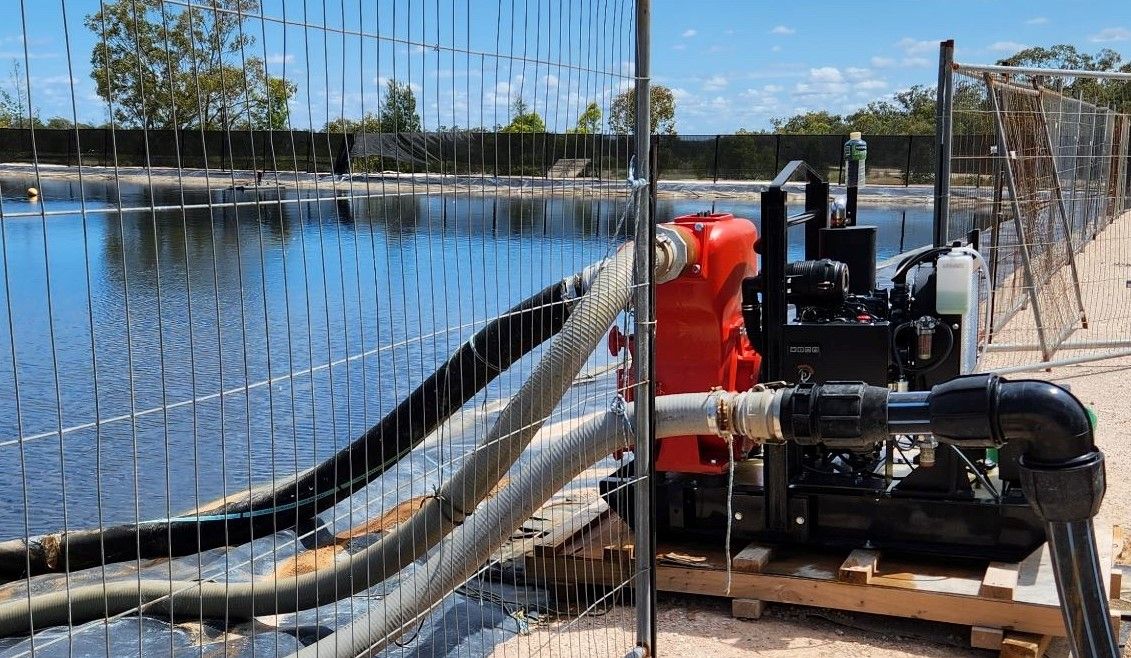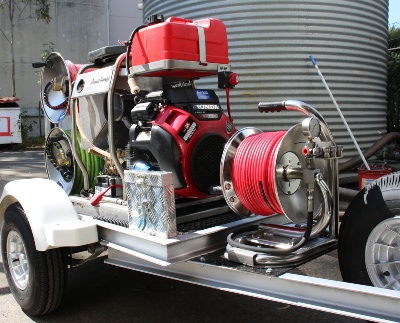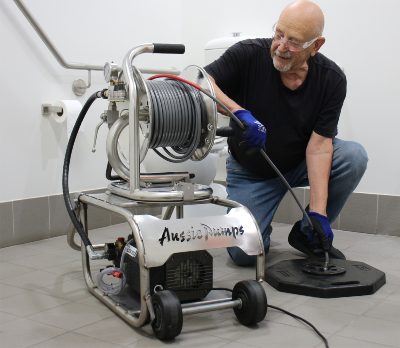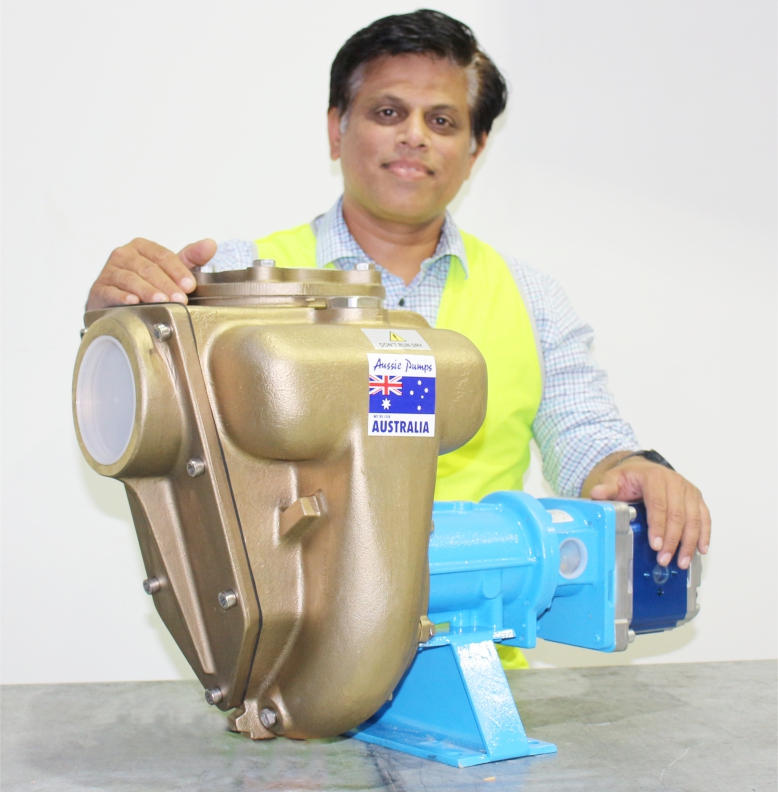Big self priming pumps seem to be coming into their own for mining, quarry, construction and even Local Government effluent applications. Australian Pump Industries have developed a line of high flow pumps which can be equally at home in quarries or sewage stations.

The company offers two models of 6” pumps. Both are designed for handling solid laden liquids and are delivered in complete ‘trash’ handling configuration. The biggest, powered by an 80 hp Deutz air cooled diesel engine, offers flows up to 6,000 lpm. That’s 360,000 litres per hour!
This big machine is the choice of Local Government bodies wanting to provide true flood emergency response. They normally specify the pumps as a trailer mounted version, as would a construction or mine site. Aussie’s model MQ600TD is capable of passing 76mm solids in suspension.
What makes the trash pumps so popular for dewatering applications is their ability to handle solids in suspension. The heavy duty self priming body features a front clean out port that allows the operator to open the pump up for clean out quickly.
A smaller, more compact model the Aussie QP60TD, is powered by a Kubota water cooled 24.8hp diesel engine. It has maximum flows of 4,000 lpm and a maximum head of 35 metres. Priming is through a direct vertical lift of seven metres. Like it’s big brother, the MQ600TD, it also has a front opening port that enables ‘chokes’ to be cleared easily!
The impeller in both pumps is a big non clog style open design that facilitates the pumping of contaminated water. That makes them ideal for handling silty material from a flood, or effluent, or sewage waste from a bypass system.
WHY WET PRIME?
The reason Aussie has focused on wet prime (self priming) pumps is because of the negative aspects of the ‘dry prime’ concept. Dry prime pumps are normally end suction design that require the use of priming devices to be able to lift water as part of the prime process.
Those devices can be anything as rudimentary as a hand pump to sophisticated vacuum pumps or even compressors. The limitation of those priming aids is that they are not designed to handle dirty water, whether it’s effluent or construction site wastewater.
HOW DO THEY PRIME?
The beauty of Aussie’s wet prime pumps is the priming system itself. The pumps are designed with huge ‘shoulders’ that are cast into the pump’s body. The shoulders constitute a water tank that holds enough water to enable the pump to prime efficiently!
The priming process is simple. There is a priming plug built into the top of the casing of the pump. The operator fills the pump with water which is trapped inside the pump housing by a check valve fitted to the suction port.
The operator ensures the suction hose has no air leaks, always a good move to check the couplings, and then starts the engine.
The pump discharges the water that is in the body, creating a vacuum. The check valve then opens on the suction port, drawing up water through the 6” suction line.
Normally, priming a pump like this takes only minutes and specifically doesn’t require the suction hose to have a foot valve. Australian Pump recommend a strainer should be on the end of that hose as foot valves are unnecessary and can clog up with solids entering the valve. This simple priming process avoids a lot of service issues.
The two big pumps, have engine protection equipment built in. The air cooled Deutz diesel comes with low oil pressure, oil temperature and V-belt failure shutdown. The Kubota water cooled diesel with the smaller pump has low oil pressure and oil temperature shutdown incorporated.
In both cases, oil lubricated mechanical seals are fitted with the bigger MQ600TD pump having a tungsten titanium carbide seal as standard.
BUILT IN VERSATILITY
Although these pumps were originally designed for mine and construction site dewatering, their ability to provide flood mitigation services or effluent bypass is well established. They have also been applied to aeration duties on effluent or sewage wastewater lagoons, providing trouble free and reliable service.
Both pumps feature integrated fuel tanks with sufficient capacity to run for up to ten hours at a time! Australian Pump also offer free extended warranties on this equipment with pumps having up to five years guarantee. The engine manufacturers, both Kubota and Deutz come with two year warranties.
For further information on these multifunction assets … click here




